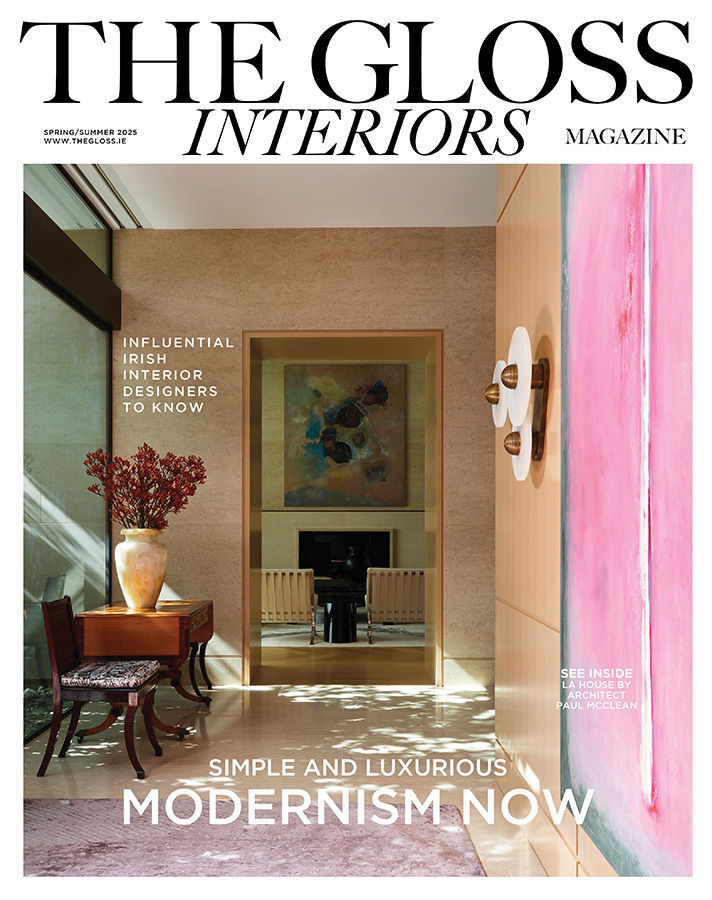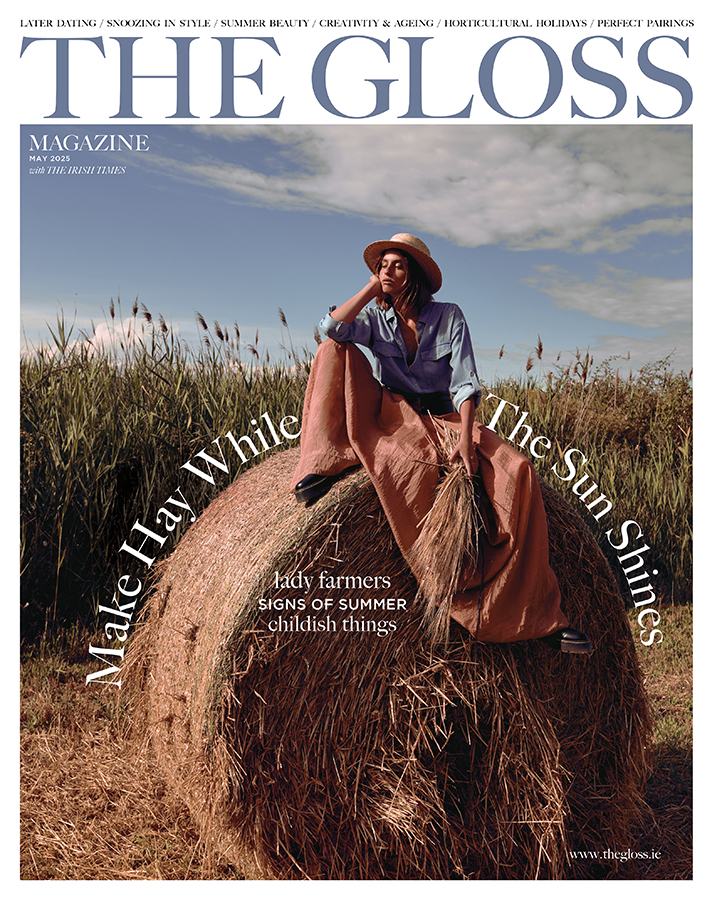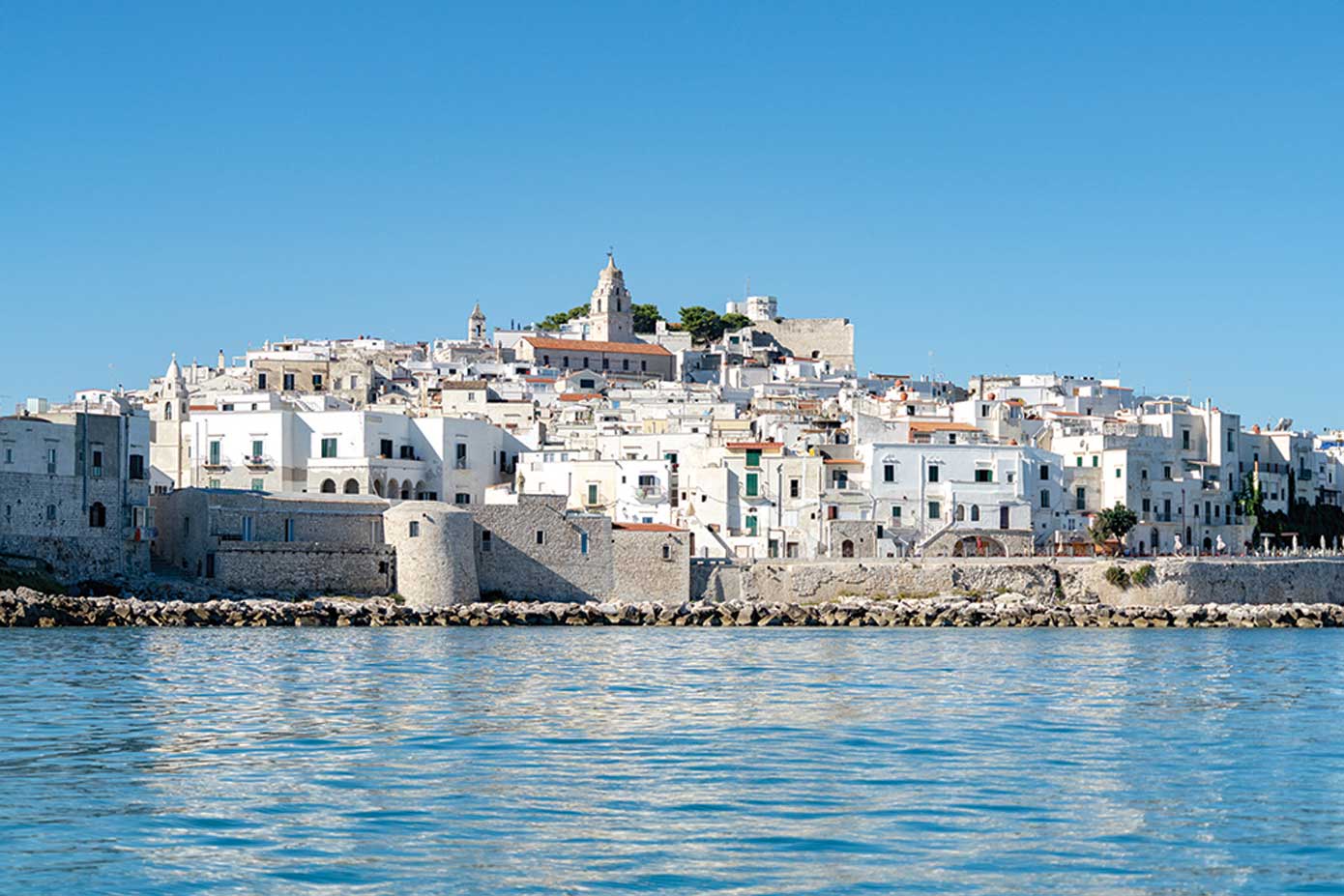When food writer Sophie Grigson came across a story about a little town called Candela in the north of Puglia that was paying people to move there, she decided she was going to move to the south of Italy. After eleven months of sorting, clearing, organising, saying goodbyes, her Oxford flat was empty and her car was so full she could barely squeeze herself in. She dropped the keys through the letterbox and headed south …
After an absence of nearly 40 years, I arrived back in Puglia in May 2019, me and my purple aubergine of a car, rammed full with pretty much everything I owned. We entered by a back route, unpropitious with its potholes and twists and turns, squiggling along the northern perimeter of the Gargano Peninsula to Vieste at its tip. Here at last.
About a year earlier I’d had one of those light-bulb moments. I would move lock, stock and barrel to the south of Italy. I’d just interviewed the author and restaurateur, Russell Norman about his book Venice, an account of a year lived in the backstreets of Venice learning to cook like the locals. There was an audience, so I was trying to appear professional and thoughtful, but was horribly distracted by two thoughts: (1) This man is so bloody gorgeous and charming, and (2) I am so jealous – why haven’t I ever done something like this?
Vieste soon squashed any lingering doubts that I was doing the right thing. Like so many of the beautiful white hill towns of Puglia, the heart is the medieval centro storico, with winding streets and stairways, alleys and arches, and a greater or lesser number of tourist shops and restaurants. So it began, with a meal in a restaurant picked at random, where the chef/patron/brothers had a yen for molecular playfulness, bracketed with the traditional in the form of tiny octopuses braised in tomato and red wine. And later an epic firework display over the harbour, perfectly framed by my bedroom window, to welcome me back. It also happened to be the festa of the town’s patron saint. Coincidence. Surely.
Candela itself turned out to be a fetching little white hill village, close to the Bari–Naples motorway, but otherwise in the middle of nowhere. Its one claim to fame is La Trasonna, Italy’s narrowest street, just 35cm wide. As streets go, it’s also very, very short. At the mayor’s office, I discovered that the relocation money was long gone, but by then I’d realised that it wasn’t the place for me. I needed to be further south, somewhere I could earn a living with my minimal Italian. I set off again, on the hunt for a home.
After a few weeks of moseying around, mostly in unseasonable torrents of rain, the small town of Ceglie Messapica found me. It’s in the verdant, trulli-strewn Itria Valley, near the better-known Ostuni. The outskirts are ugly, which is true of most Italian towns, but the centre is pretty and unassuming. There are no particular tourist attractions, but the town styles itself as a città gastronomica. In practice this means that there are a lot of restaurants, most of them good and a handful that are excellent. There is also a professional cookery school for young chefs, set around a frescoed courtyard in the very heart of the old town. A stroke of luck leads me to a small sunlit house with stupidly steep stairs and pale ochre and ivory stone walls. I know immediately that this is home.
Though Puglian cooking is obviously Italian, it has a beating heart that is all its own. It takes, ooh, about all of 24 hours to begin to spot the differences. Keep looking and they merge into a unique cuisine carved out of the land, poverty, cavalcades of invaders and a joyful greed for good food.
I’m reminded of my 20-year-old self, scribbling in notebooks as I first travelled through Italy’s south, only this time I’m back to stay.
You soon learn here that food is highly localised, and universally treasured. In my new home town, I asked for a “pasticciotto” (a divinely crumbly pastry filled with crème patissière). Oh, mad Englishwoman! “They’re a speciality of Lecce (all of 40 miles away). We don’t make them here.” Actually you can get them all over the place (including the deep-freeze section of a local supermarket), but her point was clear.
Ten miles in the other direction is the town of Cisternino, where so many of the town’s restaurants aren’t restaurants, at least not in the daytime. They’re butchers’ shops, selling impeccably displayed raw meat to whoever wants it. The display is still there in the evening, but the back rooms have opened and the butchery is transformed into a braceria or rosticceria. Hell for vegans, paradise for carnivores. Charcoal-grilled steaks, sausages and chops, but best of all, to my mind, are the bombette, little rolls of meat and cheese and herbs, oozing and tender.
In Oria, I am introduced to the pignàta, a clay pot for cooking stews, buried overnight in the embers of a wood-fired oven. Here they stew beef, pork, horse or donkey in a lake of rich tomato sauce. Some of that sauce is siphoned off to dress pasta, the rest eaten with the now phenomenally tender meat. Over on the coastal instep, in pre-season Porto Cesareo, I order a pignàta di polpo. Octopus cooked so slowly in its earthenware that it is as soft as butter, richly seasoned, but with barely a trace of sauce.
When I first looked out from the heights of Candela’s main street, the early June landscape was a patchwork of golden wheat stubble, olive groves, vines jacketed in plastic sheeting to protect against storms, and wind turbines. Hundreds of wind turbines, harvesting the gusts of air. There it was, spread out below me – wheat, wine and olive oil. The foundation stones of every meal in this blessed, endlessly fought-over (Ostrogoths, Greeks, Normans, Arabs, Austrians, Turks, French, Spaniards and Romans have all claimed it at one time or another), now often-overlooked patch of land.
Add to that the sweet, sweet tomatoes, the bitter lampascioni (muscari bulbs), garlic, rich cheeses (especially burrata, created here in Puglia a century ago), cured capocollo and chilli-seared soppressata salami. Only an hour’s drive away, east and west, the long coastline delivers fish, octopus, crabs and mussels to strings of small ports with their bobbing fishing boats and early-morning harbour markets. One of Candela’s home products is grano arso, literally “burnt grain”, not the mistranslated “big bottom” that makes me giggle childishly. Whole grains of wheat are roasted to within a millimetre of their lives, then ground to a fine flour and used for pasta (particularly orecchiette) and bread. Negroamaro and Primitivo grapes put flasks of wine on tables and in the increasing warmth of the sun, the inhabitants of Turi turn out to celebrate the Sagra della Ciliegia Ferrovia, the Festival of the Railway Cherry, a plump, juicy variety named for the train tracks that ran alongside the original granddaddy of a tree.
I knew when I arrived that Puglia was a region I want to get to know intimately, to understand culture, life, history and geography, reflecting through the prism of the food that’s put on the tables of locals and of tourists, too. I’m reminded of my 20-year-old self, scribbling in notebooks as I first travelled through Italy’s south, only this time I’m back to stay. When I moved into my little house in June 2019, the words coronavirus and pandemic meant little to me or most of Ceglie Messapica’s inhabitants. The word Covid did not exist. The world had no idea of what was to come.
That first summer was wonderful. It seemed that I had arrived in a town that lived life to the full, with events and celebrations of one sort or another every weekend and often midweek, too. It’s a party town, I told friends back in the UK. Gradually I made new friends, I tootled off on little trips to other parts of Puglia, I sampled new foods and drinks and generally had a ball. Autumn and winter were quieter but the restaurants were still full every weekend.
Then Covid-19 happened and the party ended as spring set in. 2020’s first lockdown brought silent streets and muted the natural Italian exuberance that comes with warmer weather. The exploratory excursions I had planned to the very south and the very north of Puglia were now impossible. Still, compared to many, we’ve been lucky here. The cases of Covid-19 in the town remained low and food supplies were never an issue.
Much of what I write about in my new book is based on my experiences before Covid-19, but it also spans spring to autumn of 2020. It’s been a strange time to move to a new country and a strange time to be writing a book about food. We have a new president in the White House and new vaccines to keep us safe. Ceglie Messapica, Puglia, the world will be finally trundling along the path to recovery and renewal. New horizons and new hope are ahead of us all.
A Curious Absence of Chickens: New Horizons, New Hope and New Recipes from Puglia, Sophie Grigson is out now.
LOVETHEGLOSS.IE?
Sign up to our MAILING LIST now for a roundup of the latest fashion, beauty, interiors and entertaining news from THE GLOSS MAGAZINE’s daily dispatches.






